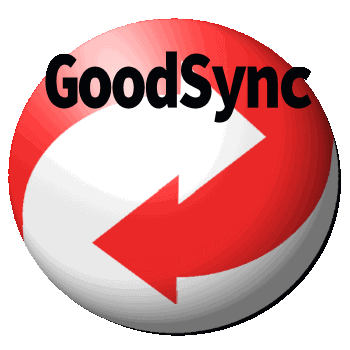
#GOODSYNC PRICING FREE#
One of the main things we are asked to do during this process (including on the free version) is to register or sign-in to a (free to use) GoodSync account.
#GOODSYNC PRICING SOFTWARE#
A process which begins by downloading the GoodSync installer form the GoodSync website itself.Īt just over 44MB at time of my testing, the GoodSync installer was a quick and convenient download and I had the software installer ruining on my system just a few moments later. Installing GoodSync is a quick and straightforward process which sees the software ready to use after just a few clicks.

#GOODSYNC PRICING FULL VERSION#
You can both download the free version of GoodSync (with no time limits) or purchase the full version via the official GoodSync Website for just $29.95 / year.

GoodSync Full (Paid version): The full version of GoodSync costs just $29.95 / year and with this comes additional functionality including the potential to make use of GoodSync Connect cloud storage, support for smartphone device synchronisation, full job automation, no limits on the number of files or jobs being synchronised and premium technical support amongst other things.For the purposes of testing out the software before committing to the paid full version or simply making use of a small number of small synchronisation and backup jobs, this is a very useful free tool to have. GoodSync Free: The free version of GoodSync provides a good amount of functionality and access to many of the tools and features included in the full (paid-for) version (albeit with some limitations such as a maximum of 3 sync jobs and a limit of 100 files per job).Versions of GoodSync AvailableĪs of the time of writing this review, there is both a free and paid version of GoodSync available for individual users as well as a business orientated version for commercial / business usage (although I will be focusing on the personal licence in this review). I will also look at some additional functionality found within GoodSync such as making use of automatic scheduling, file encryption and compression settings alongside some of the other advanced features available to GoodSync users. This process starts off with the installation of the software and then moves on to setting up both a two-way synchronisation job and then a one-way synchronisation job for the purposes of making a device backup. Just like Google Drive but a self-hosted solution.In this section of this GoodSync review I will be looking at the synchronisation software in more detail and seeing how well it performs across both synchronisation and backup related tasks. It allows you to sync all the data between all client devices. On a DIY NAS server, you can deploy Nextcloud as a file server solution. This would be useful for writing a non-blocking UI with tkinter or GTK, for example. This is a module which facilitates asynchronous communication with Nextcloud server instances using httpx.


If what you want to offer isn't "cloud", then there are other software suites ( NextCloud got mentioned, and it's pretty powerful) which are much easier to set up, maintain, and use. Beginner to homelabing - Is there an OS that is similar to AWS / Google Cloud?


 0 kommentar(er)
0 kommentar(er)
